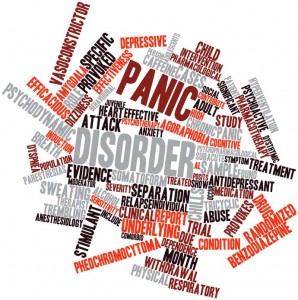1. You’re not actually going to pass out, have a heart attack or go crazy – it just feels that way.
The hallmark of panic disorder is strong physical sensations that may feel like one is having a serious physical problem, such as a heart attack. Often, because of these sensations, people avoid places where they feel like they may have more panic attacks. These are often places where they feel trapped, be it physically (airplane, stuck in traffic) or socially (movie theater). Ironically, those physical sensations are caused by the fight or flight system within the amygdala loop, created by thinking one is in a dangerous situation. In other words, a man may think he is in trouble because he is afraid of strong physical sensations, so his body activates to protect itself. This activation creates stronger physical sensations that feed the idea that he is in trouble.
2. Medication can decrease the physical symptoms, but the thoughts will stay – and it will all come back when you stop the medication.
Some of my patients will describe medication as helpful in that it helps to lessen the intensity of the physical sensations, but they do not go away. And honestly, we would not expect them to as they cannot get rid of the fight or flight system. If I tell myself I’m likely to die, it doesn’t matter how much Xanax I may be taking, my body will still activate the fight or flight system to protect itself. The real cure is to change is the underlying thinking pattern that the sensations are dangerous.
3. Treatment works.
Cognitive behavioral therapy, with a focus on exposure and response prevention, has two decades of solid research that indicates it is effective. While other things may be helpful (relaxation, essential oils, talk therapy), CBT is considered an empirically supported treatment protocol and is widely known as the treatment of choice for panic disorder. At the OC Anxiety Center a 12 session protocol is typically used, tailored to fit each individual. Treatment can also be completed in eight days in an intensive format, and Dr. Hsia often goes with patients on exposures to help them learn how to better overcome their fears.

